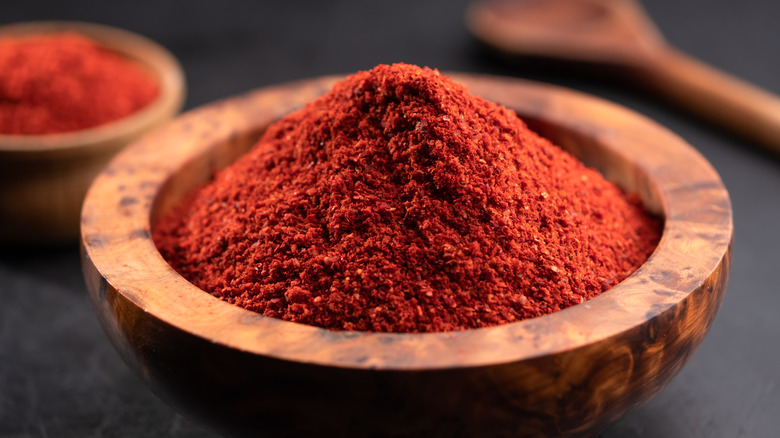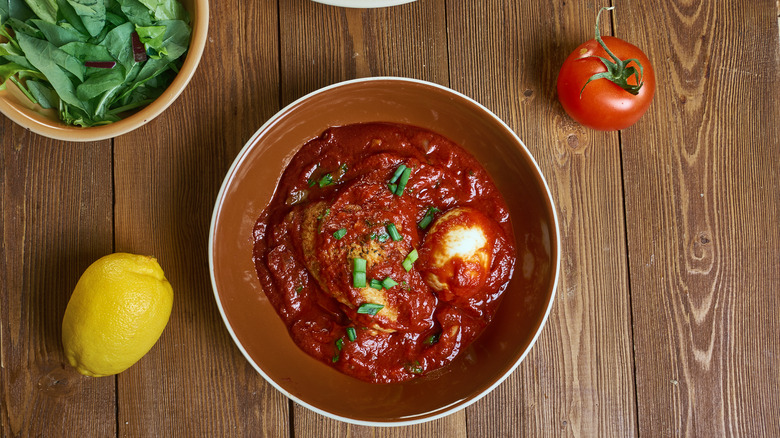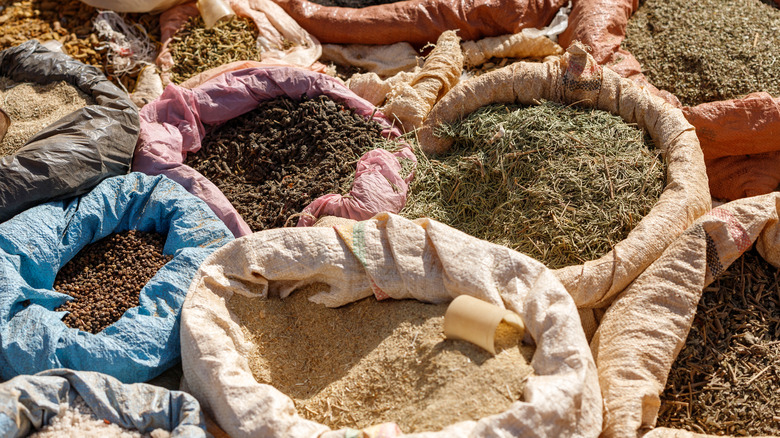The 5th Century Origins Of Berbere Spice
Stretching 4,000 rugged miles from China to Constantinople, the Silk Road is where East and West mingled for more than 1,500 years. Merchants such as Marco Polo crisscrossed it on camel and horseback, trading jade, tea, and porcelain, via National Geographic. A bounty of exotic spices from China also traveled down those roads, with some traders carrying them to the markets of Ethiopia, which means that by the 5th century, the country's cooks were experimenting with their own special blends. Eventually, these evolved into a distinctive brick-red mixture known as berbere spice. Nowadays, this spice blend is so ubiquitous across Ethiopia that it has defined the national cuisine, giving it much of its character and punch, states The Spruce Eats.
Berbere spice can be used in various dishes, from meats to vegetables to fruits. Yet sample it in different restaurants or homes, and it's unlikely you'll ever taste it the same way twice. That's because each Ethiopian family tends to have its own version, passed down via secret recipes through the generations. Additionally, different regions have access to other ingredients, meaning the mix's flavor profile can shift geographically, per Spice Station. Plus, because the blend is so complex, it can lend itself to infinite variations. In essence, berbere spice is a category rather than a constant.
What does berbere spice taste like?
Although recipes vary, berbere usually incorporates over a dozen different spices — but can contain up to 20. According to The Spruce Eats, these typically include local ingredients like ajwain, long pepper, korarima, paprika, fenugreek, ginger, red chili peppers, cardamom, peppercorns, allspice, cumin, coriander, nutmeg, cinnamon, and cloves. Yet, as variety is the spice of berbere's life, other ingredients such as African basil, garlic, thyme, rosemary, and turmeric can also show up, according to Demand Africa. Traditionally, the concoction takes days to make, including pounding, drying, and toasting, per Simply Recipes.
Although "berbere" means "pepper" or "hot" in Amharic (via Bazaar Spice Market), this isn't a spice blend overly defined by its heat. While it brings a definite bite to a dish, it also injects richness, earthiness, smokiness, savoriness, spiciness, sweetness, and citrus elements — not to mention color and aroma. In other words, berbere is deeply layered, intriguingly complex, and unique. It is also a key ingredient in doro wat, a chicken stew that is the national dish of Ethiopia, notes The Daring Gourmet.
Here's why you need berbere spice in your pantry
Berbere spice is versatile and can be included in stews, braises, marinades, sauces, rubs, kebabs, and grill dishes. According to The Spruce Eats, if you're making stew with berbere, the usual process is to sauté it with onions and oil before adding the meat. And as Spice Station explained, combining it with oil and red wine can transform berbere into a tasty dipping sauce known as awaze. In Ethiopia, this is usually eaten with injera, a spongy flatbread.
Let's not forget that a simple sprinkling of this ancient spice can add zip to any number of dishes. For instance, Chef Marcus Samuelsson of New York's Red Rooster restaurant swears by scattering it over ricotta toast and chunks of sweet pineapple, while Bazaar Spice Market recommends it with buttery popcorn or cheese gratin. You can also experiment with dusting it over yogurt, soured cream, mashed potatoes, and other dessert forms. But be warned — once you've started your journey down the berbere explorer's road, there might be no stopping you.


